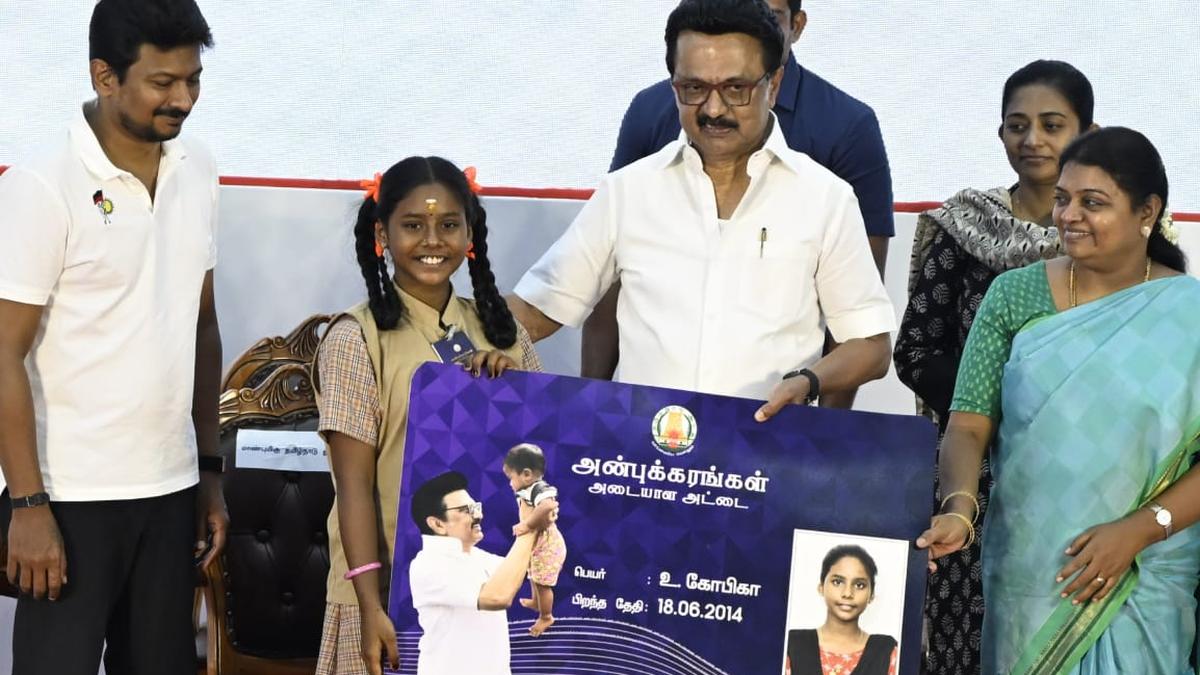Engineers Day: Read about the engineering marvels of ancient India that show how our ancestors were accomplished city builders
On 15th September every year, India celebrates Engineers’ Day. The day celebrates India’s engineering heritage and professionals. Engineers’ Day is observed on the birth anniversary of Sir Mokshagundam Visvesvaraya who was one of India’s greatest engineers. Sir Visvesvaraya was the brain behind projects like the Krishna Raja Sagara dam. On this day, India honours innovators and builders from past and present for shaping society through their marvellous work in the field of engineering. Today, on Engineers’ Day, I pay homage to Sir M. Visvesvaraya, whose brilliance left an indelible mark on India’s engineering landscape. I extend warm greetings to all engineers who, through their creativity and determination, continue to drive innovation and tackle tough…— Narendra Modi (@narendramodi) September 15, 2025 It is a tribute to the nation’s engineering heritage and professionals. The date marks the birth anniversary of Sir Mokshagundam Visvesvaraya, one of India’s greatest engineers, famed for feats like the Krishna Raja Sagara dam. It is a day to honour innovators and builders, past and present, who shape society through their work in the field of engineering. While Indian history is often remembered for magnificent temples, it is worth recalling that our ancestors were also remarkable city builders and engineers. From ancient dams and reservoirs to planned cities, highways and ports, ancient India’s engineering marvels speak to a sophisticated urban civilisation. On this Engineers’ Day, let’s have a look at a few of these feats that prove India’s forebears were kickass engineers in their own right. Ancient dam still irrigating Tamil Nadu The Grand Anicut is an ancient dam built across the Kaveri River. Locally known as Kallanai, it was built around the 2nd century CE by Chola King Karikala Chola. The Grand Anicut is one of the oldest water-regulation structures in the world that are still serving the region. It is a 329-metre-long stone dam which tames the flow of the river to irrigate the Cauvery Delta. Source: Sikkim Express The dam was constructed using unhewn stone and engineered to divert waters into canals to boost agriculture in the region. In the 19th century, British engineers were so impressed that they strengthened and replicated its design for newer projects. The dam originally irrigated about 69,000 acres of farmland which expanded to over a million acres by the early 20th century with improvements. Kallanai is not only a tourist attraction but living proof of ancient India’s engineering prowess. Bhopal’s 11th-century lake still supplies a city Another engineering marvel is Bhojtal which is also known as the Upper Lake of Bhopal. It was created by Paramara King Raja Bhoj in the 11th century. It was constructed on the Kolans River to provide water to the people of the kingdom. Source: Trip Untold/Samir Singh It has been over a thousand years since the lake was constructed, and it is still the lifeblood of Bhopal. Bhojtal fulfils the water needs of 40% of the city’s population. The lake covers 32 square km and is among the oldest human-made lakes in India. The name of the city “Bhopal” is derived from Bhoj Tal or Bhoj’s Lake itself. In 2011, the lake was formally renamed Bhojtal in honour of its founder, and a statue of Raja Bhoj now watches over its waters. Bhojtal is also part of a UNESCO-listed wetland. Harappan cities – Water systems and a dockyard Long before the Cholas and Paramaras, the people of the Indus Valley Civilisation were building carefully planned cities with infrastructure that would be impressive even today. The city of Dholavira is located in present-day Gujarat. It was a thriving city around 2,500 BCE. Those who lived in the city engineered a series of massive water storage tanks and step-wells to create a unique water management system to harvest the scant rainfall in the Rann of Kutch. Source: UNESCO During excavation, archaeologists have found at least five large reservoirs at the site. There are huge sunken basins carved into rocks. Furthermore, a sophisticated network of drains has been found at the site. These innovations allowed a city in a semi-desert to thrive for centuries. The Harappans mastered the seas as well. The port-town of Lothal, which was a thriving region in Gujarat in 2,400 BCE, is home to what archaeologists believe is the world’s earliest known dockyard. It is a massive rectangular dock which spans over 220 metres. It once connected Lothal to an ancient tributary of the Sabarmati River and allowed ships to berth inland. Source: The Print It was an astonishing maritime infrastructure for its time, complete with sluice gates to control water flow, enabling trade with Mesopotamia and beyond. Marine excavations have found salt and marine microfossils in Lothal’s basin, confirming it was open to the sea. Both Dholavira and Lothal are prime examples of how Indian subcontinent cities were pioneering cit



On 15th September every year, India celebrates Engineers’ Day. The day celebrates India’s engineering heritage and professionals. Engineers’ Day is observed on the birth anniversary of Sir Mokshagundam Visvesvaraya who was one of India’s greatest engineers. Sir Visvesvaraya was the brain behind projects like the Krishna Raja Sagara dam. On this day, India honours innovators and builders from past and present for shaping society through their marvellous work in the field of engineering.
Today, on Engineers’ Day, I pay homage to Sir M. Visvesvaraya, whose brilliance left an indelible mark on India’s engineering landscape. I extend warm greetings to all engineers who, through their creativity and determination, continue to drive innovation and tackle tough…
— Narendra Modi (@narendramodi) September 15, 2025
It is a tribute to the nation’s engineering heritage and professionals. The date marks the birth anniversary of Sir Mokshagundam Visvesvaraya, one of India’s greatest engineers, famed for feats like the Krishna Raja Sagara dam. It is a day to honour innovators and builders, past and present, who shape society through their work in the field of engineering.
While Indian history is often remembered for magnificent temples, it is worth recalling that our ancestors were also remarkable city builders and engineers. From ancient dams and reservoirs to planned cities, highways and ports, ancient India’s engineering marvels speak to a sophisticated urban civilisation. On this Engineers’ Day, let’s have a look at a few of these feats that prove India’s forebears were kickass engineers in their own right.
Ancient dam still irrigating Tamil Nadu
The Grand Anicut is an ancient dam built across the Kaveri River. Locally known as Kallanai, it was built around the 2nd century CE by Chola King Karikala Chola. The Grand Anicut is one of the oldest water-regulation structures in the world that are still serving the region. It is a 329-metre-long stone dam which tames the flow of the river to irrigate the Cauvery Delta.
The dam was constructed using unhewn stone and engineered to divert waters into canals to boost agriculture in the region. In the 19th century, British engineers were so impressed that they strengthened and replicated its design for newer projects. The dam originally irrigated about 69,000 acres of farmland which expanded to over a million acres by the early 20th century with improvements.
Kallanai is not only a tourist attraction but living proof of ancient India’s engineering prowess.
Bhopal’s 11th-century lake still supplies a city
Another engineering marvel is Bhojtal which is also known as the Upper Lake of Bhopal. It was created by Paramara King Raja Bhoj in the 11th century. It was constructed on the Kolans River to provide water to the people of the kingdom.
It has been over a thousand years since the lake was constructed, and it is still the lifeblood of Bhopal. Bhojtal fulfils the water needs of 40% of the city’s population. The lake covers 32 square km and is among the oldest human-made lakes in India. The name of the city “Bhopal” is derived from Bhoj Tal or Bhoj’s Lake itself.
In 2011, the lake was formally renamed Bhojtal in honour of its founder, and a statue of Raja Bhoj now watches over its waters. Bhojtal is also part of a UNESCO-listed wetland.
Harappan cities – Water systems and a dockyard
Long before the Cholas and Paramaras, the people of the Indus Valley Civilisation were building carefully planned cities with infrastructure that would be impressive even today. The city of Dholavira is located in present-day Gujarat. It was a thriving city around 2,500 BCE. Those who lived in the city engineered a series of massive water storage tanks and step-wells to create a unique water management system to harvest the scant rainfall in the Rann of Kutch.
During excavation, archaeologists have found at least five large reservoirs at the site. There are huge sunken basins carved into rocks. Furthermore, a sophisticated network of drains has been found at the site. These innovations allowed a city in a semi-desert to thrive for centuries.
The Harappans mastered the seas as well. The port-town of Lothal, which was a thriving region in Gujarat in 2,400 BCE, is home to what archaeologists believe is the world’s earliest known dockyard. It is a massive rectangular dock which spans over 220 metres. It once connected Lothal to an ancient tributary of the Sabarmati River and allowed ships to berth inland.
It was an astonishing maritime infrastructure for its time, complete with sluice gates to control water flow, enabling trade with Mesopotamia and beyond. Marine excavations have found salt and marine microfossils in Lothal’s basin, confirming it was open to the sea.
Both Dholavira and Lothal are prime examples of how Indian subcontinent cities were pioneering city planning, water engineering and maritime architecture 4,000 years ago.
Mauryan highways linked the subcontinent
During the Mauryan Empire between the 4th and 2nd centuries BCE, the state built extensive highways to knit together its vast territories and promote trade. The two most celebrated routes were the Uttarapatha (Northern Road) and the Dakshinapatha (Southern Road). The Uttarapath was a grand trunk route running across the Indo-Gangetic plain, it stretched from the Gangetic delta in the east across north India to Taxila (in the northwest, near modern Islamabad).
The arterial road connected important cities like Pataliputra or Patna, Mathura and Taxila. These roads enabled the flow of goods, armies and ideas. Equally important was the Dakshinapath, the road branching southwards from Ujjain down into the Deccan.
These highways were more than dirt tracks. They were maintained routes with milestones and shade trees. Emperor Ashoka, in his inscriptions, mentions planting banyan trees for shade and digging wells along roads for travellers and animals. Safe and well-kept highways were crucial for governance. Couriers, pilgrims and traders all used them. The Mauryan highways show that over 2,200 years ago, India had a concept of national road networks to connect distant corners of the subcontinent, a striking feat of administrative engineering.
Poompuhar – An ancient global port city
On India’s southeastern coast, the ancient Tamils built a city that stood as a bustling maritime gateway. Poompuhar, also known as Kaveripattinam or Puhar, was a flourishing port city at the mouth of the Kaveri River and served as an early Chola capital which was at its height during the 3rd century BCE to the 2nd century CE. It was a cosmopolitan harbour teeming with trade.
Tamil literature of the Sangam Age paints a vivid picture of this planned city. The markets were full of goods, the streets were broad and there were warehouses. The harbour was so deep that “big ships entered the port of Puhar without slacking sail” to unload exotic cargo. Poems like the Pattinappaalai describe multi-storeyed mansions in the city, busy wharves, and even mention specific districts for merchants and artisans.
Submerged wharves and pier walls have been discovered on the seabed off Poompuhar, indicating parts of the ancient city now lie under the waves. Researchers believe a combination of erosion and a cataclysmic tsunami (possibly around 300 CE) swallowed sections of Poompuhar, leading to its decline. Yet, in its prime, this city was a hub connecting South India to Rome, Greece, Southeast Asia and beyond. Roman coins and beads unearthed in the area speak to its international reach.
Conclusion
These examples, a 2,000-year-old dam, a medieval lake, Indus Valley water works, imperial highways, and a lost port city, highlight the overlooked engineering genius of ancient India. Our ancestors were not only building places of worship, but also planning entire cities, managing water resources, constructing infrastructure and facilitating commerce on a grand scale. Their projects were built to last, with some still serving us today.
As India observes Engineers’ Day in honour of modern engineering heroes, it is also a moment to take pride in this legacy of innovation.





























































































































